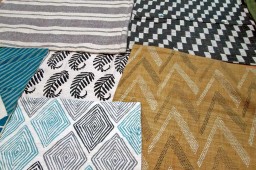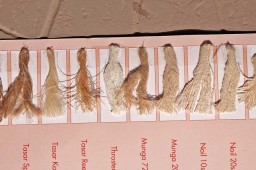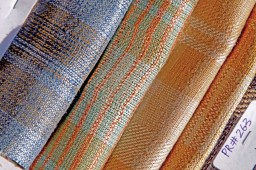
A sustainable business with different products and different approach, Eco Tasar Silk, Delhi true to its name is offering home furnishing products with scarves and garments made of hand-made silk. Started in 2007, the company has seen almost 30 per cent growth every year since then, providing livelihood to more than 600 women in various villages of Jharkhand, Bihar and Assam where Tasar, Eri silk yarn is prepared by hand, followed by weaving, which is being done in Bhagalpur, using almost nil energy. In conversation with Apparel Online, Khitish Pandya, CEO, Eco Tasar Silk, shares the unique business model…
Associated with the NGO Pradan from the year 2000, Khitish decided to take on the responsibility of providing livelihood to the women residing in silk growing areas, hence leading to the birth of Eco Tasar Silk. Today, the company is doing an annual business of almost US $ 3 million (Rs. 18 crore); associated with 18 small, medium and even boutique buyers who come and pay cash for the ready stock. However, making the concept a successful business model was not easy and the project was plagued by many problems like raw material availability, reducing work force for silk production and selected options for product development, besides its own limitations of being hand-made silk, like it could not be properly twisted in comparison to machine weaving, lack of uniformity and thickness and recurring problems during dyeing; so overall it is a very primitive technology. Even the lead time is at an average of 120 days, from 75-90 days in case of pre-approved silk; and sadly the buyer is not willing to pay anything extra for the product.
Despite so many challenges, it is still preferred by the traditional customer base for being hand-made. “We cannot do too much R&D, which includes playing around with the colours. If florescent colours are in trend, we cannot offer the same in hand-made silk, so normally we play around mostly earthy looks and tones but whatever the limitations are there, we try to make that our strength. On the flip side, being hand-made, it gives us capability to offer a lot of variety with little changes and small lots,” says Khitish. Apart from two full-time qualified designers from the premiere institute, the company regularly engages students on design projects to develop fresh creative work.
The company, besides doing in-house manufacturing, also groups women together, provides them equipments and guides them. These groups follow proper systems; and by working 7 hours every day, they are able to make Rs. 3,000 to Rs. 4,000 per month.
Eco Tasar Silk sourced 22 tonnes (2.5 to 3 lakh metres) of yarn last year from villages of Assam, Jharkhand, Orissa, and Bihar. The FOB of the company’s products range between US $ 5 to US $ 25 as in hand-weaving it has to pay more than double compared to power cost which affect the final product cost by 10 to 20 per cent.
Though the company started with the intention to promote Tasar silk, but its limited availability compelled the company to also use Eri silk and Khadi cotton for their collections. “Our priority is to use Tasar, but in order to sustain business and fulfil our motto to provide employment, we are using Eri and Khadi too,” says Khitish. Interestingly, since the yarn is hand-made it doesn’t have any competition from China or any other country. But still most of the buyers pay lip service to hand-made, and when it comes to paying, there is always pressure to reduce the cost. The hand-made does not translate into higher prices with us,” informs Khitish. Cushions, throws, duvet covers are major product categories and the MOQ is 100 pieces, however if the fabric is ready, it does accept smaller orders, but with reasonable rate compensation.
As a future growth strategy, Eco Tasar Silk is now planning to start production of table runners and placemats. With focus on the US, Europe, Japan and Scandinavian countries, the company is looking to explore deeper into these markets, rather than explore new markets. While Japan and the Scandinavian countries ask for minimalistic kinds of products, few other countries want very colourful designs and it can be done using the same fabric. As of now, 30 per cent of the business is coming from the domestic market, and to promote the concept on a bigger platform, Eco Tasar Silk is in the process to be online with some well-known e-retailers.
“We don’t see ourselves becoming a very big company since our aim is helping the society, and we calculate our success according to how many people we are able to provide livelihood. We want to work with large number of home-based producers of hand-made yarn. The market will grow for our products, so we are sure of future growth and are confident of achieving a turnover of US $ 4.25 million (Rs. 25 crore) in next few years. It will create more business for women and we will help at least 3,000 women,” concludes Khitish.









